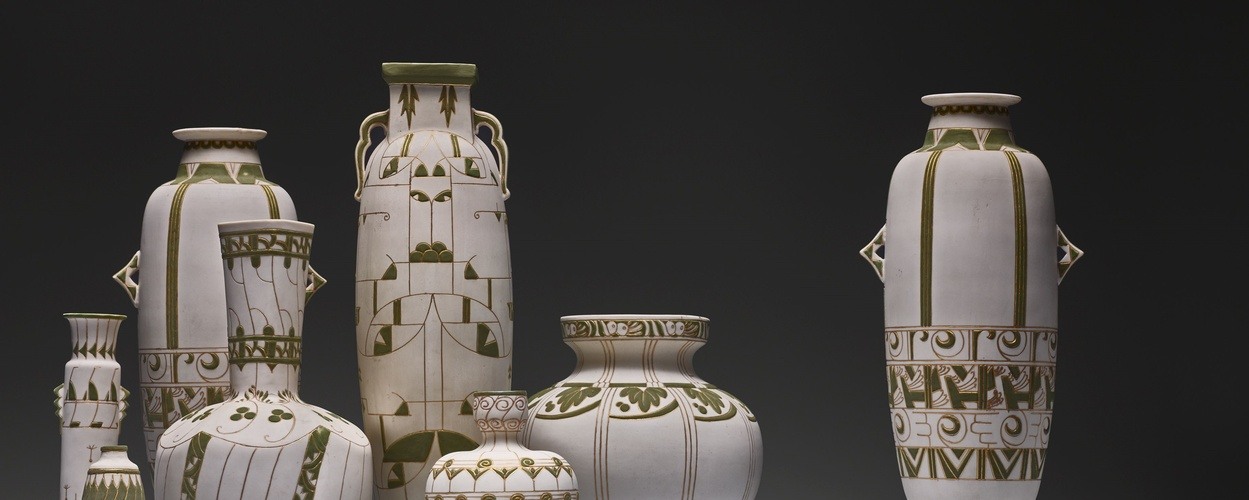Left: Pendulum with linear geometric decoration and two roosters, so called porcelain biscuit, approx. 1902, De Porceleyne Fles, Delft, design Adolf Le Comte, porcelain, Princessehof National Museum of Ceramics (on loan from Ottema-Kingma Stichting).
Right: Vase with stylized floral decoration, so called porcelain biscuit, approx. 1902, De Porceleyne Fles, Delft, design Adolf Le Comte, porcelain, Princessehof National Museum of Ceramics.
The overwhelming success of Rozenburg's eggshell porcelain must have aroused jealousy among its competitor De Porceleyne Fles. How should the factory respond? The answer came in 1902 at the exhibition in Turin. There, the porcelain biscuit was launched: vases of unglazed white porcelain with a decoration of thin layers of colored porcelain and incised lines filled with gold. It received rave reviews and foreign buyers in particular were interested. However, this product would only remain in production for a short time.
Below: porcelain biscuit, approx. 1902, design Adolf Le Comte, execution Thooft & Labouchère for De Porceleyne Fles, Delf, porcelain, collection Meentwijck, Princessehof National Museum of Ceramics. Photo: Erik & Petra Hesmerg


